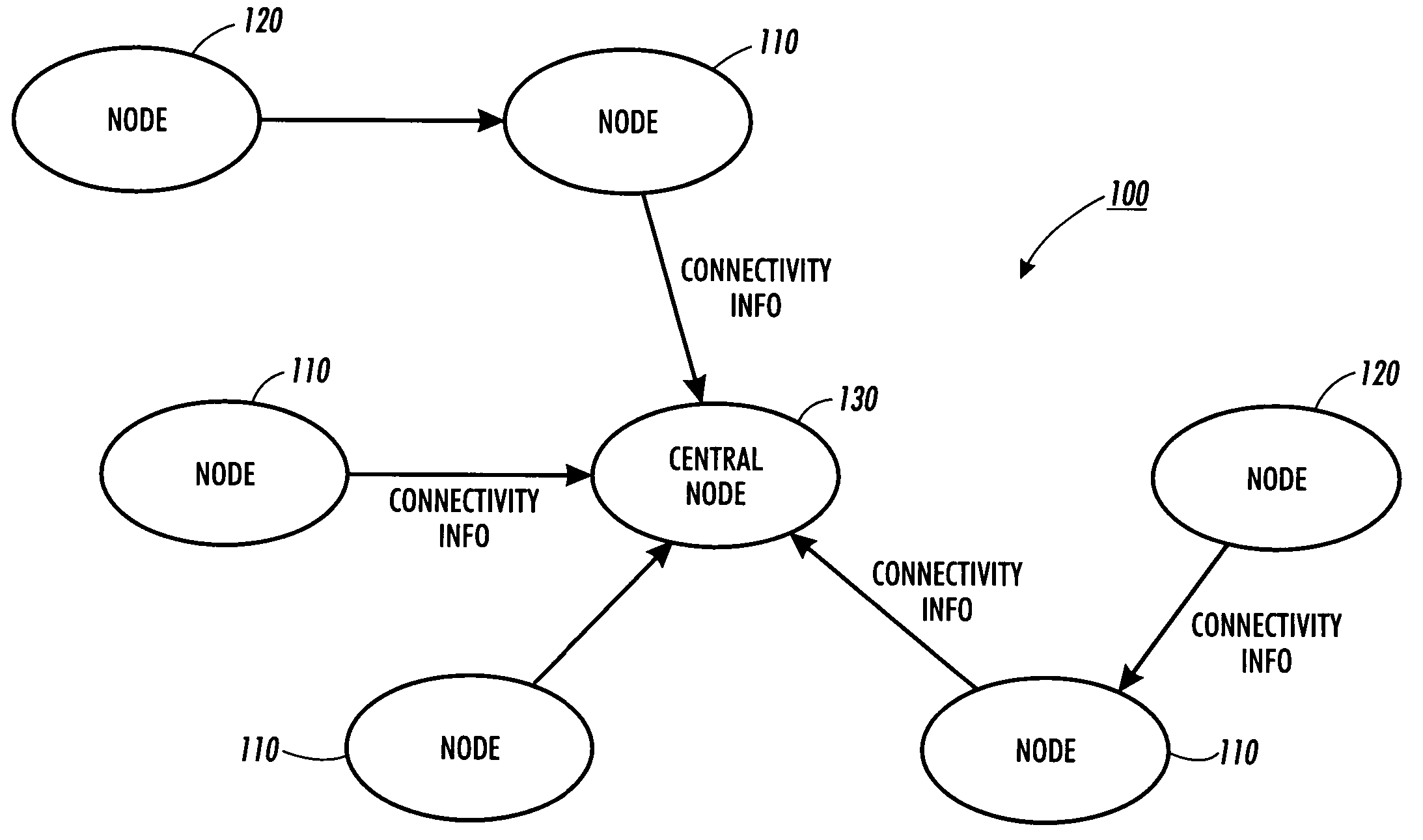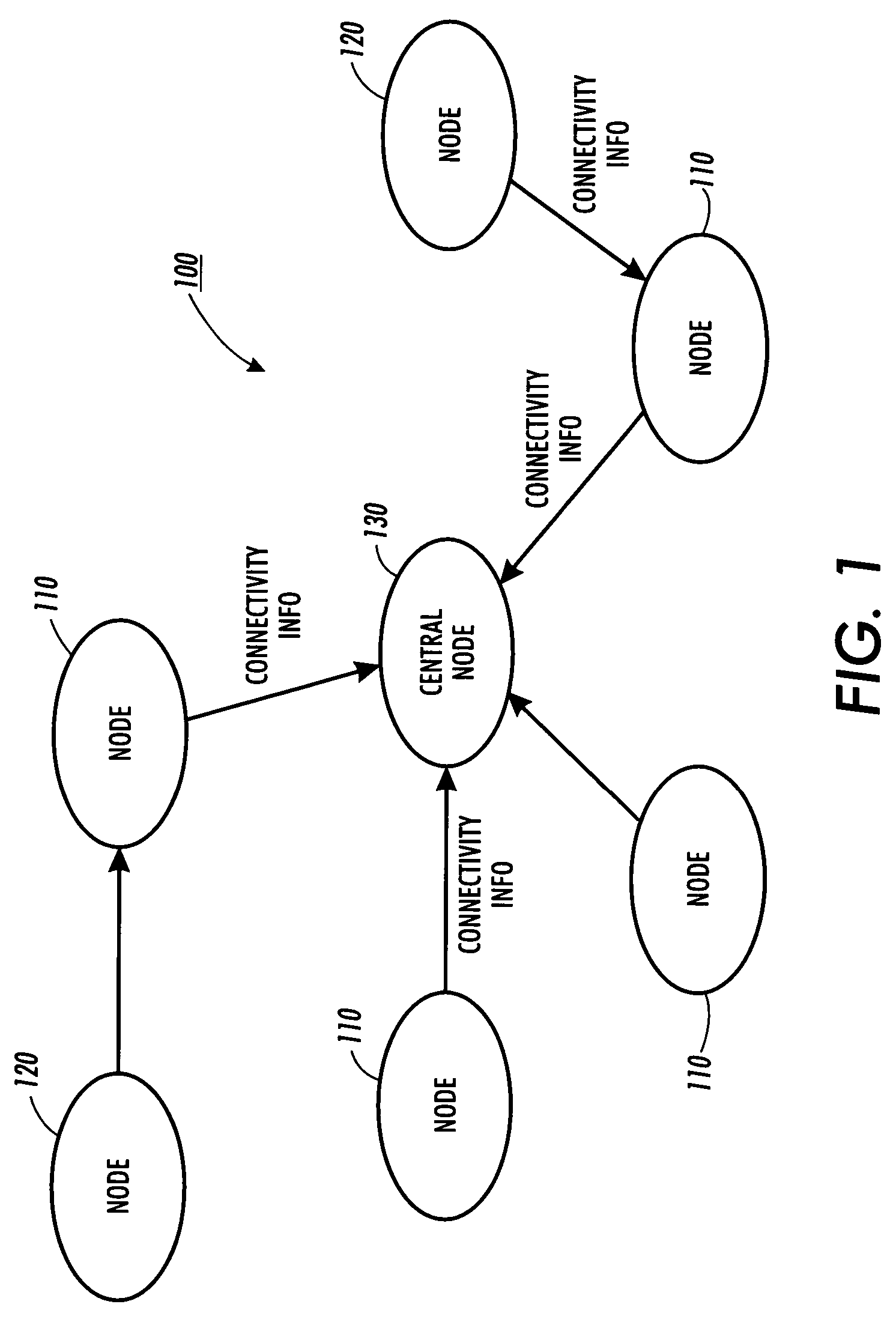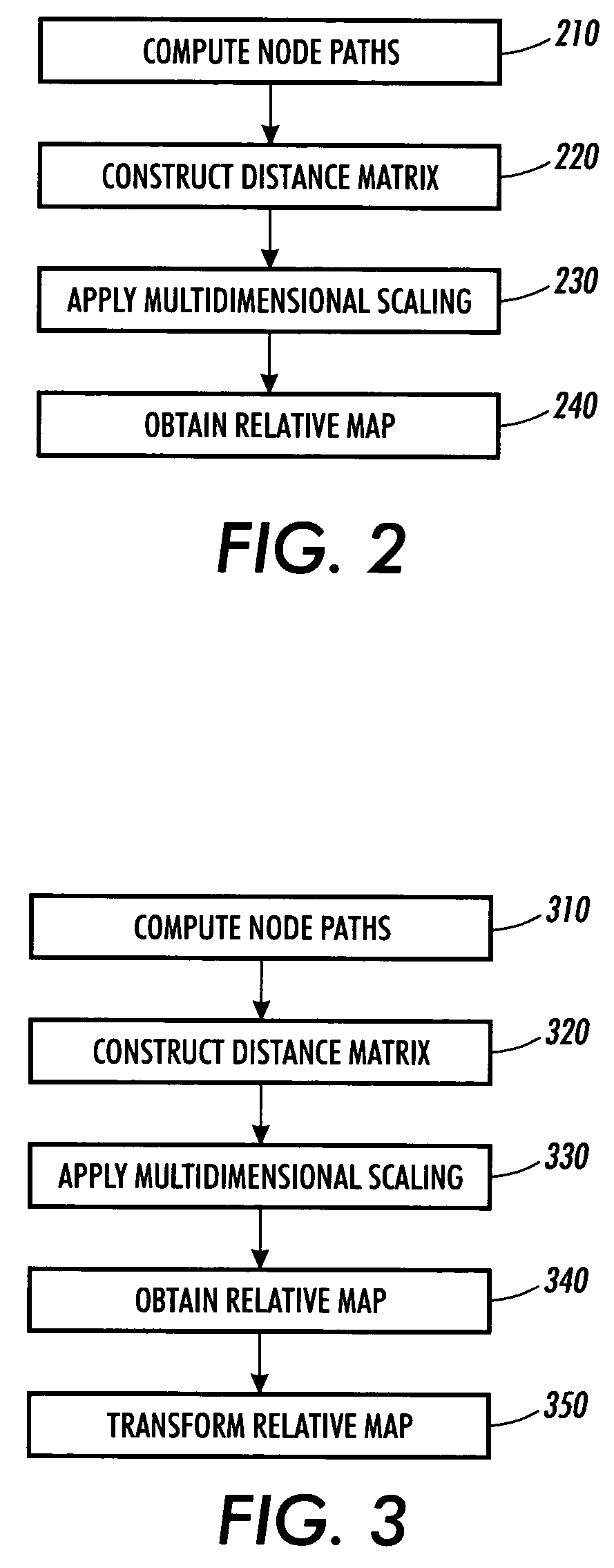Node localization in communication networks
a communication network and node technology, applied in the field of networked electronic devices, can solve the problems of large estimation errors, low reliability and accuracy of rssi methods, and cost-effective solutions
- Summary
- Abstract
- Description
- Claims
- Application Information
AI Technical Summary
Benefits of technology
Problems solved by technology
Method used
Image
Examples
Embodiment Construction
[0021]Developed herein are a method and system utilizing connectivity information (which nodes are within communications range of which other nodes) to derive the positions of nodes in large-scale networks. Although these nodes can communicate with one another, not every node knows its precise location, either in absolute geographical coordinates or in terms relative to other nodes in the network. This method and system may take advantage of additional information, such as estimated distances between neighbors or known positions for certain anchor nodes, if it is available. The method is based on multidimensional scaling (MDS) techniques, which compute coordinates of objects from given distances or dissimilarities between them to construct embeddings of the objects in a metric space. In the disclosed system, the computed embeddings correspond to relative maps of the network nodes. An optional refinement step may be utilized to improve the relative maps found by MDS. Absolute coordin...
PUM
 Login to View More
Login to View More Abstract
Description
Claims
Application Information
 Login to View More
Login to View More - R&D
- Intellectual Property
- Life Sciences
- Materials
- Tech Scout
- Unparalleled Data Quality
- Higher Quality Content
- 60% Fewer Hallucinations
Browse by: Latest US Patents, China's latest patents, Technical Efficacy Thesaurus, Application Domain, Technology Topic, Popular Technical Reports.
© 2025 PatSnap. All rights reserved.Legal|Privacy policy|Modern Slavery Act Transparency Statement|Sitemap|About US| Contact US: help@patsnap.com



